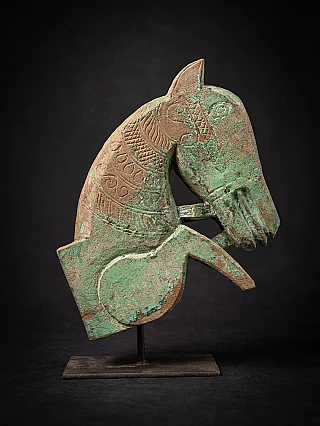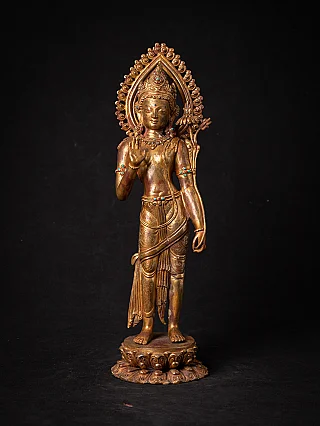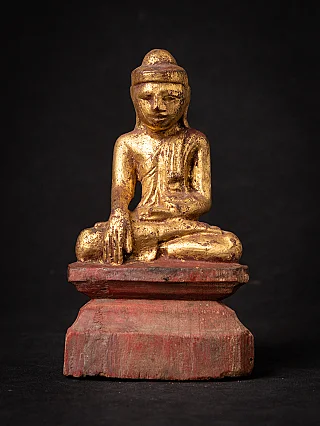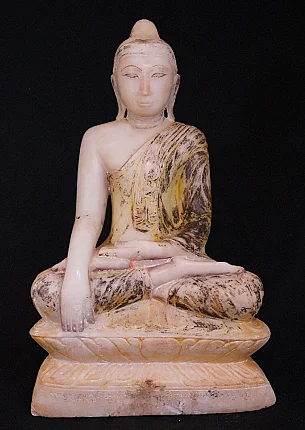Techniques and Challenges in Restoring and Preserving Buddha Statues
Author : Peter Vredeveld

Buddha statues are significant in Buddhist culture and practice, representing enlightened beings and serving as sacred objects of devotion. However, the passage of time and environmental factors can lead to the gradual deterioration of these statues, compromising their integrity and cultural value. Restoring and preserving Buddha statues is a meticulous process that involves techniques, challenges, and a deep understanding of their cultural and spiritual significance.
Get exclusive Buddha statues of high quality
Understanding the Need for Restoration

The passage of time and various environmental factors pose significant threats to preserving Buddha statues. As these statues age, cracks may develop, colors fade, and delicate details become worn or damaged. Additionally, exposure to humidity, temperature fluctuations, dust, and pollutants can damage the statues' materials, such as wood, stone, metal, or clay. These changes not only compromise the aesthetic appeal of the statues but also impact their historical and cultural value.
Recognizing the need for restoration is crucial to ensure the longevity and integrity of Buddha statues. By restoring these statues, experts can address the visible signs of decay, stabilize structural weaknesses, and restore faded or damaged features. Restoration efforts aim to bring the statues back to their original splendor, revealing their intricate details and vibrant colors. Moreover, restoration helps preserve the statues' historical and artistic significance, allowing future generations to appreciate and connect with these important cultural artifacts.
Techniques and Approaches to Restoration
Restoring Buddha statues involves a range of techniques and approaches tailored to the specific requirements of each statue. Traditional restoration methods have been practiced for centuries, often involving meticulous manual work. Skilled artisans carefully clean the statues, removing accumulated dirt, dust, and pollutants using gentle brushes and specialized cleaning agents. They may also employ retouching techniques to restore faded paint or gilding, aiming to recreate the original vibrancy and luster. Traditional materials and methods, such as gold-leaf application or mineral pigments, are utilized to match the historical aesthetic.
Modern technology has recently supplemented traditional methods, offering additional tools and insights for restoration. Advanced imaging techniques, such as X-rays, infrared imaging, or 3D scanning, allow experts to study the statues' internal structure and hidden features without causing any harm. These technologies aid in identifying structural weaknesses, remote repairs, or the original intent of the artisans. Scientific analysis of pigments, materials, and surface coatings can provide valuable information about the statue's composition and assist in making informed decisions regarding restoration. Integrating traditional craftsmanship with scientific analysis ensures a comprehensive and meticulous approach to restoration, balancing historical accuracy with the preservation of the statue's artistic and cultural value.
Challenges in Restoring Buddha Statues

Restoring Buddha statues poses unique challenges that demand expertise, attention to detail, and careful consideration. One significant challenge lies in assessing and treating structural damages and material decay. Over time, the statues may develop cracks, lose their structural integrity, or experience erosion due to exposure to the elements. Expert restorers must conduct a thorough examination to identify the extent of the damages and determine the appropriate treatment methods. Structural stabilization techniques, such as resin injections or metal reinforcements, may strengthen weakened areas and prevent further deterioration.
Cultural, ethical, and religious considerations also challenge restoring Buddha statues. Each statue carries historical and cultural significance, and alterations or repairs must respect their authenticity and original intent. Restorers must thoroughly research the statue's historical context, origin, style, and symbolism to ensure accurate restoration. Furthermore, religious sensitivities come into play, as the statues hold spiritual value for many individuals. Striking a balance between restoration and preservation while respecting the religious beliefs associated with the statues can be a delicate task. Additionally, reconstructing missing or damaged parts requires careful craftsmanship and deep knowledge of the statue's original design to recreate the missing elements with historical accuracy.
Preserving Buddha Statues for the Future:
Preserving Buddha statues for the future involves proactive measures to protect them from further deterioration. One crucial aspect is maintaining optimal environmental conditions. Controlling temperature, humidity, and lighting is essential to slow down the natural aging process of the statues. Storage areas, exhibition spaces, and display cases should be carefully designed to minimize exposure to fluctuating environmental conditions. Regular monitoring and maintenance ensure that any changes or damages can be promptly addressed.
Collaboration among museums, cultural institutions, and local communities is vital for long-term preservation efforts. Establishing comprehensive conservation strategies, including documentation, research, and preventive maintenance programs, helps ensure the statues' continued well-being. Educational initiatives play a key role in raising awareness about the importance of preserving Buddha statues and fostering a sense of responsibility among individuals and communities. By involving the public in the preservation process, a collective commitment can be forged to protect and cherish these valuable cultural artifacts for future generations.
Balancing Restoration and Authenticity
Striking a balance between restoration and authenticity is a crucial consideration in preserving Buddha statues. While restoration aims to repair damages and enhance the aesthetic appeal of the statues, maintaining their historical and cultural authenticity is of utmost importance. Restorers must conduct extensive research and analysis to understand the original design, materials, and techniques used in creating the statues. This knowledge guides their restoration decisions, ensuring that interventions respect the statue's integrity and historical context.
Ethical considerations also come into play when balancing restoration and authenticity. Some statues may have undergone previous restorations or have accumulated layers of paint or gilding over time. In such cases, determining which layers or elements to retain and which to remove can be challenging. Restorers need to carefully evaluate each layer's historical significance and choose restoration techniques that will preserve the most authentic and historically relevant features. This delicate balance ensures that the restored statues remain faithful to their original form and intent while addressing the damages they have sustained over time.
Cultural and Spiritual Significance:
Buddha statues hold profound cultural and spiritual significance for Buddhist communities and beyond. These statues serve as powerful symbols of enlightenment, compassion, and inner peace. The presence of a beautifully restored Buddha statue can create a serene and sacred space for worship, meditation, and contemplation. The artistic and aesthetic qualities of the statues carefully brought back to their original glory through restoration, evoke a sense of awe and reverence.
Culturally, Buddha statues represent the artistic achievements of different regions and periods. They reflect the diverse styles, iconography, and craftsmanship that have evolved throughout history. Restoring and preserving these statues helps preserve cultural heritage, allowing future generations to appreciate and learn from the artistic and historical traditions they embody. Moreover, the spiritual significance of Buddha statues lies in their ability to inspire individuals on their spiritual journeys. The presence of a restored Buddha statue can instill a sense of tranquility, serenity, and connection to the teachings of Buddhism, encouraging a deeper exploration of one's inner self and fostering spiritual growth.
Conclusion
In conclusion, restoring and preserving Buddha statues are paramount to safeguarding their historical, cultural, and spiritual value. These statues represent the artistic achievements of different regions and periods, reflecting the diverse styles and craftsmanship that have evolved throughout history. The statues can regain their original splendor while maintaining authenticity and integrity by employing meticulous restoration techniques and approaches.
Restoring Buddha statues poses unique challenges, including assessing structural damages, addressing material decay, and navigating cultural and religious sensitivities. Skilled artisans, supported by advanced technologies and scientific analysis, are crucial in preserving these sacred artifacts. Proactive measures, such as controlling environmental conditions and implementing comprehensive conservation strategies, contribute to their long-term preservation.
The cultural and spiritual significance of Buddha statues cannot be understated. They symbolize enlightenment, compassion, and inner peace, inspiring individuals on their spiritual journeys. Through their preservation, we protect our shared human heritage and ensure that future generations can appreciate and learn from the artistic and historical traditions they embody.
Embracing the responsibility to cherish and protect Buddha statues is a collective endeavor that involves collaboration among experts, cultural institutions, and local communities. By nurturing a sense of appreciation and understanding, we forge a path toward the continued preservation of these remarkable artifacts. Let us unite in our commitment to preserve the legacy of Buddha statues, honoring their cultural and spiritual significance and passing them on as profound sources of inspiration for generations to come.
Share this page














































